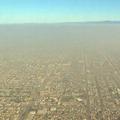 美國國家研究院(National Research Council)最新一期報告發現,在許多地區的地面臭氧濃度下曝露不到24小時,即可能導致夭折。
美國國家研究院(National Research Council)最新一期報告發現,在許多地區的地面臭氧濃度下曝露不到24小時,即可能導致夭折。
臭氧為煙霧中重要的組成分子,容易引發呼吸系統問題及其他健康狀況。在特定的地面臭氧濃度下,連續曝露不到24小時的時間與致命性之間的關連性已趨於明顯,儘管各方解讀論調不一,卻已讓美國環保署提高警覺,要求國家研究院提出研究報告。
專責委員會並未被要求檢視環保署所採用的設定臭氧標準的參考事據,包括三月新訂立的公共衛生標準。然而,由芝加哥大學公共衛生研究所名譽教授巴萊三世(John C. Bailar III)所主持的委員會指出,臭氧與致命性之間的關連性相當確鑿,建議環保署未來在設定臭氧標準時,應將此項列入健康效益分析之中。
委員會除了囊括全美研究環境、公共衛生與統計學的專家外,亦包含數名來自加拿大和西班牙的科學家。
委員會根據近期的研究成果發現,患有先天疾病者等情形,一旦曝露在地面臭氧下,將易使疾病發作的機率提高,而導致死亡。委員會同時表示,僅剩幾天壽命的患者亦可能發生夭折。
環保署要求委員會進行臭氧與致命性因素之關連性分析,且檢視搶救生命的金錢價值分配法,以作為健康效益之評估。
如同其他聯邦機構,環保署亦被要求針對每年秏費超過1億美元的挽救生命行動,實施成本效益分析。
環保署近期採用人口研究的結果,估算在不同的政策選擇上減低臭氧濃度,可減少因曝露而夭折的人數,進而利用統計上的生命價值(the value of a statistical life, VSL),分配金錢價值以降低死亡率。
統計上的生命價值的概念源自於對成人的價值研究,探討成人願意付出的代價,換言之,願意放棄何等利益或便利,在短期內降低他們的死亡風險。
改善健康環境的金錢價值或統計上的生命價值,是建立於團體如何看待接受健康效益的價值;而非決策者或專家學者們的衡量標準。
環保署將統計上的生命價值實施於所有挽回的生命,不論其年齡或健康情況,此方法將導致一位高齡80歲且體弱的人,其與另一位2歲擁有健康身體的人,共享同等的統計上之生命價值。
環保署要求委員會檢測延長壽命的價值,以確立一項說明剩餘平均餘命內之差異方法,是否在科學研究方法上成立。
例如,環保署可透過計算統計上的生命價值,預估剩存壽命的價值,自此,2歲的嬰孩將擁有較80歲年邁老者擁有更高的生命價值。
據理而言,與剩餘壽命較長的人們相較之下,平均餘命剩存時間較短的人,普遍不會貢獻太多資源,來改變其夭折的風險。
然而,若可以改善原先容易縮短平均餘命的環境,並且可以維持或恢復一種廣被接受的生活品質,即使人們身殘體弱或年事已高,仍願意為剩餘的平均餘命貢獻更高的金錢價值。
Exposures of less than 24 hours to current levels of ground-level ozone in many areas are likely to contribute to premature deaths, finds a new National Research Council report.
Ozone, a key component of smog, can cause respiratory problems and other health effects. In addition, evidence of a relationship between exposures of less than 24 hours and mortality has been mounting, but interpretations of the evidence have differed, prompting the U.S. Environmental Protection Agency, EPA, to request the Research Council report.
The committee that wrote the report was not asked to consider how evidence has been used by the EPA to set ozone standards, including the new public health standard set by the agency last month. But the evidence is strong enough that the EPA should include ozone-related mortality in health-benefit analyses related to future ozone standards, says the committee, which is chaired by John C. Bailar III, professor emeritus, Department of Health Studies at the University of Chicago.
In addition to scientists specializing in environment, public health, and statistics and from across the United States, the committee includes scientists from Canada and Spain.
Based on a review of recent research, the committee found that deaths related to ozone exposure are more likely among people with pre-existing diseases and other factors that could increase their susceptibility. But, the committee said, premature deaths are not limited to people who are already within a few days of dying.
The EPA asked the committee to analyze the ozone-mortality link and assess methods for assigning a monetary value to lives saved for the health-benefits assessments.
Like other federal agencies, the EPA is required to carry out a cost-benefit analysis on mitigation actions that cost more than $100 million per year.
The EPA recently used the results of population studies to estimate the number of premature deaths that would be avoided by expected ozone reductions for different policy choices, and then assigned a monetary value to the avoided deaths by using the value of a statistical life, VSL.
The VSL is derived from studies of adults who indicate the "price" that they would be willing to pay - that is, what benefits or conveniences someone would be willing to forgo - to change their risk of death in a given period by a small amount.
The monetary value of the improved health outcome, or VSL, is based on the value the group places on receiving the health benefit; it is not the value selected by policymakers or experts.
The EPA applies the VSL to all lives saved regardless of the age or health status, so a person who is 80 years old in poor health is estimated to have the same value of a statistical life as a healthy two-year-old.
To determine if an approach that accounts for differences in remaining life expectancy could be supported scientifically, the EPA asked the committee to examine the value of extending life.
For example, EPA could calculate VSL to estimate the value of remaining life, so a two-year-old would have a higher VSL than an 80-year-old.
It is plausible that people with shorter remaining life expectancy would be willing to devote fewer resources to reducing their risk of premature death than those with longer remaining life expectancy.
By contrast, if the condition causing the shortened life expectancy could be improved and an acceptable quality of life can be preserved or restored, people may put a high value on extending life, even if they have other health impairments or are elderly.
全文及圖片詳見:ENS



